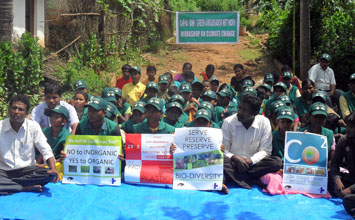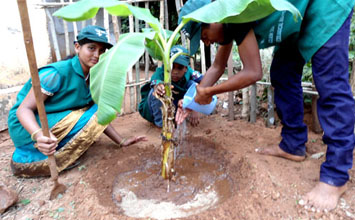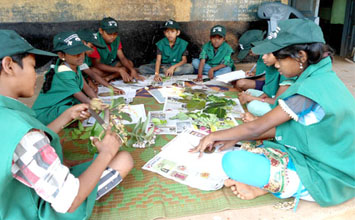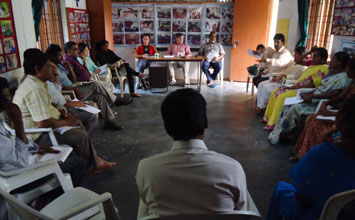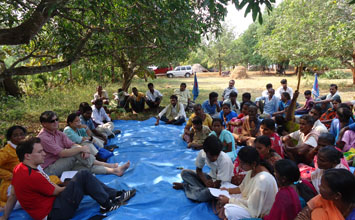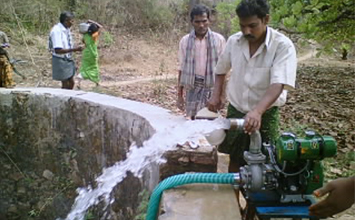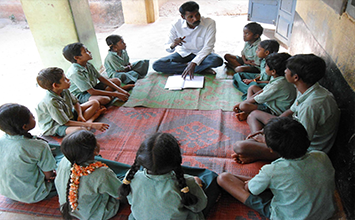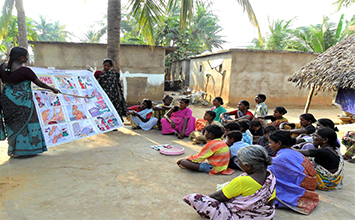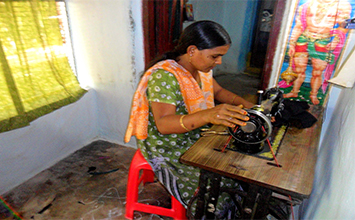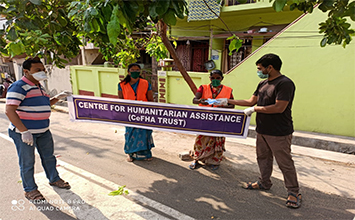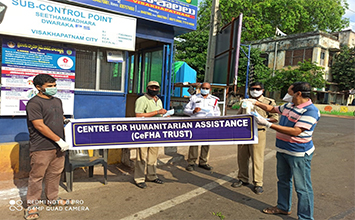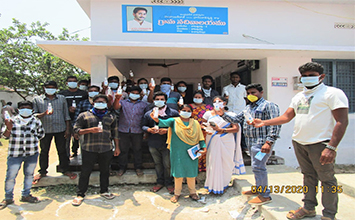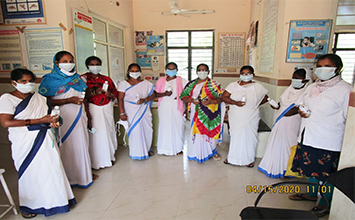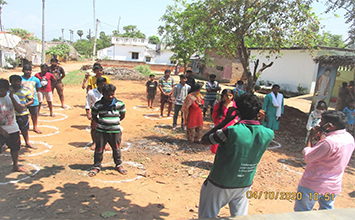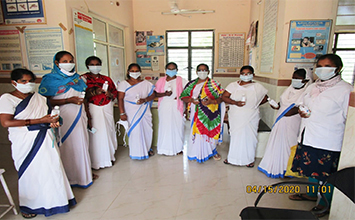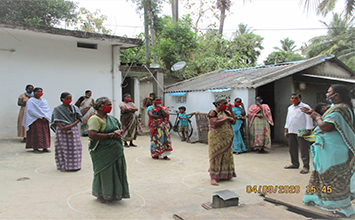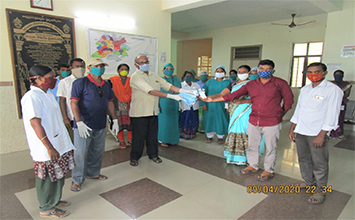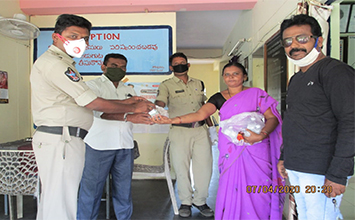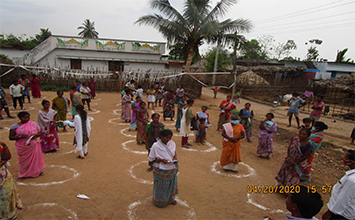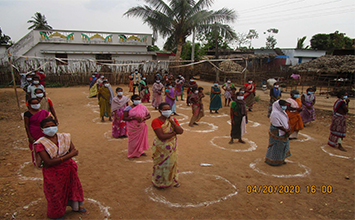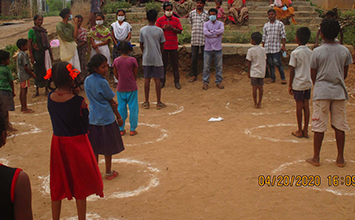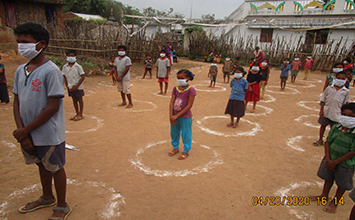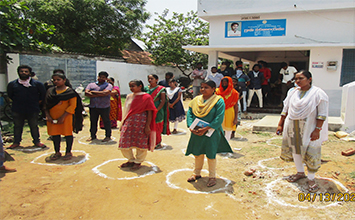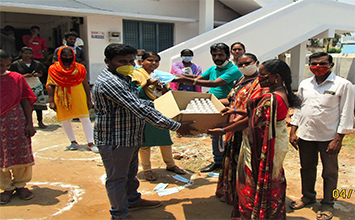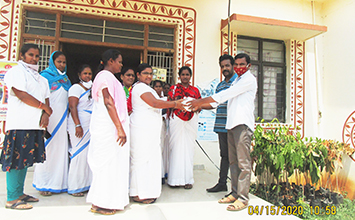|
|
|||||||||||||||||||||||||||||||||||||||||||||||||||||||||||||||||||||||||||||||||||

 Centre for Humanitarian Assistance Trust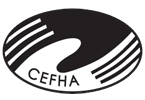 works with the indigenous communities, |
|||||||||||||||||||||||||||||||||||||||||||||||||||||||||||||||||||||||||||||||||||
|
“To establish a just, egalitarian social order through the participation of communities to create self sustenance and self reliance for individuals, Families and Communities” |
|||||||||||||||||||||||||||||||||||||||||||||||||||||||||||||||||||||||||||||||||||
Tsunami in AP, India – ReliefGOAL To help tsunami victims overcome the trauma, recoup and return to the sea The Big Picture 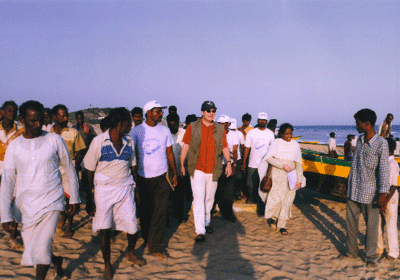
The south Asian tsunami of 2004 did not hit the coast of Andhra Pradesh (AP) as ferociously as it struck Tamilnadu (TN), further south in peninsular India. Loss of life was much less in AP compared to TN. But loss of livelihood was on a comparable scale. This being the scenario, it became easy for everyone - governments, NGOs, media - to ignore the tsunami problem in AP, and so they did. CeFHA benefited from the extensive survey of the coast, from Kanyakumari in the South to Srikakulam in the north, undertaken by partner organisations, for not only assessing the impact of tsunami but also the extent of intervention. So CeFHA was able to base its appeal to the funding partner organisations on a need basis and arrive at a strategic partnership for fruitful intervention. Objectives
Activities
The fear of epidemics was pandemic in the tsunami affected regions. CeFHA organised inclusive health camps, addressing medical problems, vulnerabilities and disabilities. Tsunami Emergency Relief Summary
Tsunami in AP, India – RehabilitationThe Big Picture 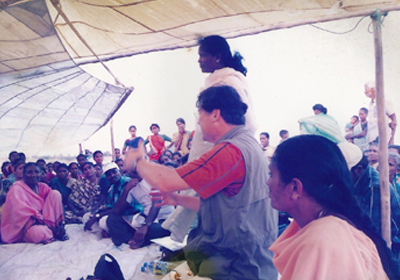
Tsunami relief in general tended to be excessive of the kind that made communities not only numb to the past but also to the future. A majority of the funding organisations did not penetrate Andhra Pradesh and if a few did penetrate, they did not take a long-term view of the intervention. CeFHA and their partners looked at the programme strategically, identifying the areas, the communities and its constituents. Community empowerment, leadership programmes, children’s education, alternative livelihoods, social forestry and alternative energy were identified as the key components for all-round damage control and lasting rehabilitation. Outcome
Agents of empowerment were identified from within the community and familiarised with skills and techniques through a series of workshops. Consensus building was undertaken for recognition of the role of the leadership and identification of the key issues to work on. The health programmes run in the immediate aftermath of tsunami focussing primarily on trauma care, injury treatment and epidemic control were refocussed into health, nutrition and sanitation programmes with community participation. Tsunami helped bring to the fore the realisation among fisherfolk that in a way they were still no more than hunter-gatherers and that they needed to transform. This transformation had to be shaped from the ground up, beginning with the children and having roots in education
| |||||||||||||||||||||||||||||||||||||||||||||||||||||||||||||||||||||||||||||||||||
AP Flood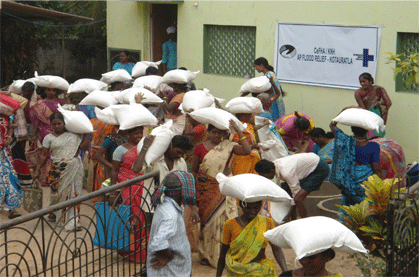
GOALTo alleviate the suffering of the flood-affected families by strengthening their livelihood and food security support systems, linking the relief and rehabilitation to the development process The Big PictureThe AP flood of 2005 made it double the disaster for the people. The coastal areas had been struck heavily by the south Asian tsunami just months earlier in December 2004, from which the people had barely recovered. This made it mandatory for a re-think of the tsunami intervention strategy and some new-think on linking relief to development. So the flood relief provided by CeFHA and partners went beyond relief and took into account the past and the future of the company. Outcome
A.P. Flood Relief Village - Revuvathadu, near VisakhapatnamCeFHA concentrated on just one village, assisting and working with 57 families at various levels
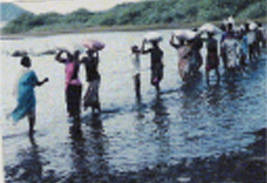
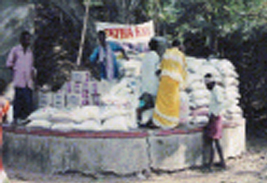


1. Food for Work ProgrammeRelief was planned for 15 days for 57 families through food for work programme - 400 meters’ of gravel road was relaid, and 155 feet and 330 feet of village drain and street drain were built. 2. Broad Non-Food Assistance
Food assistance was the immediate need which CeFHA and the partner organisations worked on. Food assistance had to be unconditional, purely humanitarian with no strings attached, but the CeFHA effort managed to tie it to an outcome, directed at letting the community see its self-worth Emergency Relief Kodavatipudi Village Report – 30-09-08Goal:The overall goal is to give moral support and immediate relief by providing the food to the suffering of the affected poor Dalit families. Objective
Needs
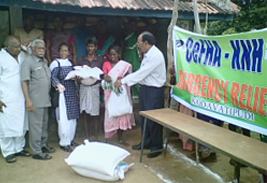 Targeted Beneficiaries:The targeted Beneficiaries are the 87 Dalit families of the Kodavatipudi village and these families are covered by KNH response. Most of these Families are depend upon agricultural Cooli. 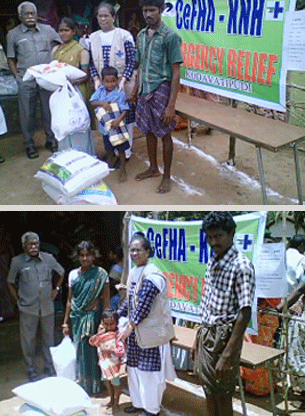
Planned Activities for Relief:
CeFHA Intervention :Each family is provided with food assistance for 30 days. The package of food assistance for 30 days will contain the following items
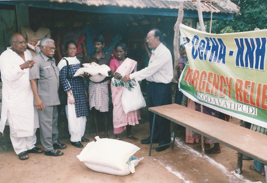
Care Extended :
NEELAM FLOOD RELIEF PROJECT REPORT –KOTAURATLA 20125th November 2012 – 30th April 2013Goal and Objectives:The overall goal is to alleviate the suffering of the affected poor Dalit and Tribal families andstrengthening their livelihood and food-security support systems, linking the relief and rehabilitation to the development process. 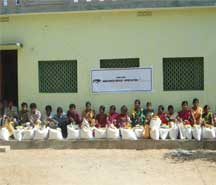


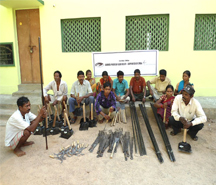
OBJECTIVES :
Targeted Beneficiaries :The targeted Beneficiaries are the 658 Dalit and Tribal families of the villages of Kotauratla and these families will be covered by KNH response. Most of these communities are depend upon t small Piece of land, agriculture labour and landless people. CRISIS PHASE :1 Direct Assistance(a) Food Assistance 658 Families (b) School kits 579 2 Health/SanitationHealth assistance medicines20 Villages | Sanitation 3Village | Health Camps 2 B. Post Crisis Phase 2. Livelihood Support1 Food For work programme-Land Dev249 farmers 2490 Humandays Activity Report:A. Crisis Phase:
| |||||||||||||||||||||||||||||||||||||||||||||||||||||||||||||||||||||||||||||||||||
Project: A.P. Hudhud Cyclone Flood Relief Kotauratla Mandal Visakhapatnam DistrictOctober 2014 – June 2015Sleeping material sets supported – 897 ChildrenUtensils supported – 822 WomenFruit Bearing Plants supported- 897 ChildrenWomen / PWD livelihood supported- 79 WomenCashew plants supported- 577 WomenAgriculture Crop loss seeds supported- 350 FarmersGoal and Objectives:The overall goal is to alleviate the suffering of the affected widow women , poor Dalit and Tribal families and strengthening their livelihood and food-security support systems, linking the relief and rehabilitation to the development process. 
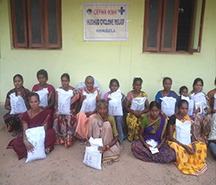

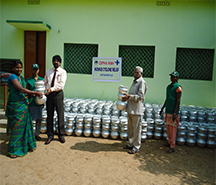
OBJECTIVES :
Methodology:Looking at the situation, problems and needs in the area the project started working in the area in relief and support in livelihood to give moral support and bring a change in the life of Dalit and Tribals in the area with participatory approach. It initiated its activities along with families, meeting people in village and meeting the Community leaders, old, youth, women and children and identified issues, problems and needs. The project has already conducted a detailed study in the Community and Individual survey for the victims. During the survey the staff and people understand the damages and loss of their livelihood of the people, by which the people and staff are aware of the real situation and in the process both jointly made the assessment. The staff discussed with children, SHGs and community, organised group discussions and shared the information. CeFHA formed Village relief Committees including village leaders, child representatives and women groups and build their confidence to regain their strength. Any programme initiated in the village is discussed, planned, owned, implemented and monitored and they are part of the total relief program Needs in the area of Kotauratla Village:
COMMUNITY PARTICIPATION AND INVOLVEMENTProgramme Process and implementation: The Project began its work on 20th October 2014 with a base line survey and Micro-plan, started organising community meeting and sharing with community regarding the relief activity. The people and children joined in the meetings, discussions, identifying the victims & loss, planning the activities. The Crisis Phase activities were initiated through Village Relief Committee in the village. The Community was totally involved in planning and implementation of the relief. Training was imparted to selected people like members of Peoples organization, SHGs and child network in promotion of relief activities like organizing the people for food for work programme like road repair, Bore well canal cleaning, House repair, drain cleaning, sanitation, village cleaning and Drinking water well chlorination. Community participation in planning became a crucial part in this relief programme. One of the very important strategies was taken up for relief activity to initiate a process of unfolding peoples own Capabilities and skills and took immediate action to overcome from the Crisis. Location and Area of OperationAmong the districts which are affected by the HUDHUD cyclone, it is observed from the field survey done by CeFHA that 24 villages are affected in kotauratla Mandal in Visakhapatnam. CeFHA is planning to take up relief & Rehabilitation work in 24 villages, those who are worst hit by Cyclone, children and women are more affected and where CeFHA is already working. CeFHA carried out its humanitarian assistance operations in 24 Villages of Kotauratla Mandal Visakhapatnam District only. In one district, from one Mandal of 24 villages 1441 families will be covered. The details are given below:
Targeted BeneficiariesThe targeted Beneficiaries are the 1441 Dalit and Tribal families of the 24 villages of Kotauratla and these families will be covered by KNH response. Most of these communities are depend upon a small Piece of land, agriculture labour and landless people. Criteria for SelectionThe affected 1441 families and 350 farmers were chosen basing on the damages occurred to the families. Lists of affected families from respective villages were collected by a team of people, along with Green Ambassadors, SHG members and dalit network members representing by CeFHA. Criteria adopted:
Description of Targeted Assistance and Implementation
The CeFHA strongly feels that the main emphasis of the response should be to restore the livelihood of the affected communities by the Cyclone disaster. The proposed programme includes only the neediest support to restore the livelihood of the people. A. Crisis Phase:
1. Utensils Assistance to Women (3 No. Each) |
|||||||||||||||||||||||||||||||||||||||||||||||||||||||||||||||||||||||||||||||||||
Centre for Humanitarian Assistance Trust, Flat.No-501, Revathi Hill, Balaya Sastri LayOut, Seethammadhara, Visakhapatnam 530013 |
|||||||||||||||||||||||||||||||||||||||||||||||||||||||||||||||||||||||||||||||||||
© 2012 - 2013 | All Rights Reserved - CefHA Designed & Developed |
|||||||||||||||||||||||||||||||||||||||||||||||||||||||||||||||||||||||||||||||||||

